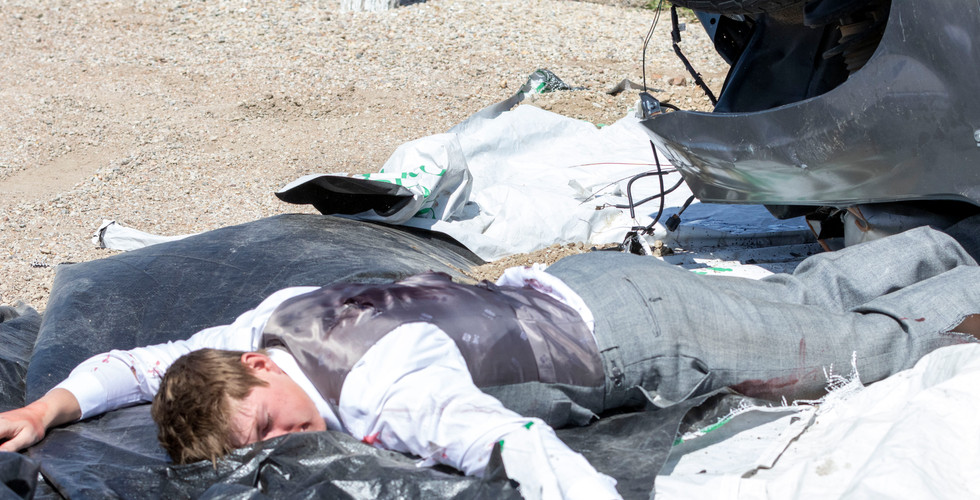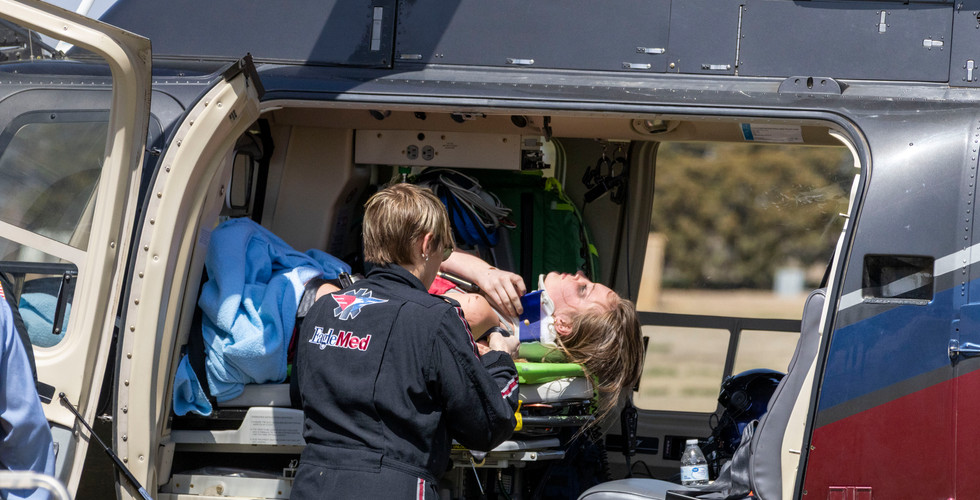Behind the Scenes of a Life-Saving Simulation: 13 Organizations, Countless Lessons
- Derek White
- Apr 11
- 3 min read
by Derek White

Recently, a large-scale emergency response simulation unfolded at a local high school, and it was anything but ordinary. With the involvement of 13 organizations, volunteer crews, and dedicated high school students, the event served not only as a certification requirement but as a powerful and educational experience for everyone involved.
To understand how it all came together, I sat down with the instructor at the heart of it all Candy Aschenbrenner, a teacher who also leads an EMT course at the school. What began as a simple contrived experience to meet state certification requirements quickly blossomed into a full-scale demonstration involving EagleMed, local EMS crews, tow companies, and more.
Planning a Multi-Agency Event
Candy began planning back in December, reaching out to potential participants with a vision to create a comprehensive, realistic scenario. “I just started reaching out… sent the first email in December,” they said. After coordinating with the principal, the National Honor Society became sponsor, and various emergency services, the team held their first planning meeting in February, followed by a final prep meeting in early April, then came the big day.
Realism, Volunteers, and Community Support
Despite its scope, the entire event was fueled by volunteers. “Everybody just gave their time,” Candy emphasized. From EagleMed to S&M Towing, every organization contributed their services and personnel free of charge, simply to support the students and the broader community.
The realism was striking — especially the arrival of EagleMed’s helicopter. “I just contacted them and it worked out,” they said. “The weather was good, and the crew was available.”
Student Engagement and Eye-Opening Moments
Three standout students; Carter Krier, Bella Hudson, and Kylie Maxfield, led the response team. Carter, already a certified EMT, took on a leadership role for the first time. “It was a great learning experience for him,” Candy noted. “He’s also my Teacher's Assistant, so he knows exactly what they've been taught.”
The experience was particularly impactful for other students as well. “Some of them said, ‘I had no idea it took that many people,’ or ‘I didn’t realize how long it would take.’” The goal was to show students that a car crash doesn’t just affect the driver, it affects the community, friends, and family.
A Community-Wide Effort
Several local businesses and agencies stepped up to support the event. Triple T Towing and Ryburn Repair donated and transported the crashed vehicle. Sheridan County EMS brought a secondary ambulance so that one could remain on standby for actual 911 calls. Paramedic Jordan Riley and AEMT Jen Coffman were also key contributors from Hoxie.
Other students involved included Levi Renner, Mason Jackson, Kylie Hodges, Tori Kuhlman, and Maddie Crotts — names that might sound familiar in the community. “Maddie’s dad runs Oakley Farm and Home Center,” the instructor mentioned, highlighting how interconnected the community really is.
More Than a Simulation
The instructor’s hope is that these experiences will open doors for students interested in health sciences — not just in hospitals, but in pre-hospital emergency care. “It gives them an avenue… maybe even a job opportunity that can bolster their college experience.”
For Carter and his classmates, this wasn’t just a class project — it was a chance to lead, learn, and potentially save lives in the future.
As someone who was there, I can say it was an incredible thing to witness. The planning, dedication, and passion that went into this project made it an unforgettable experience, not just for the students, but for everyone involved.


























































































































































































Comments